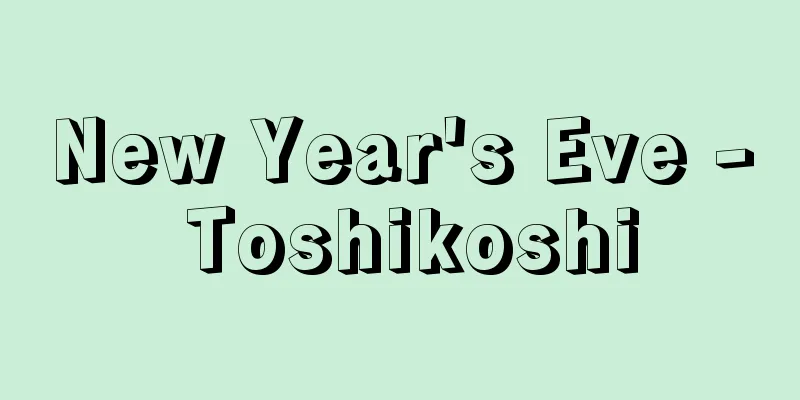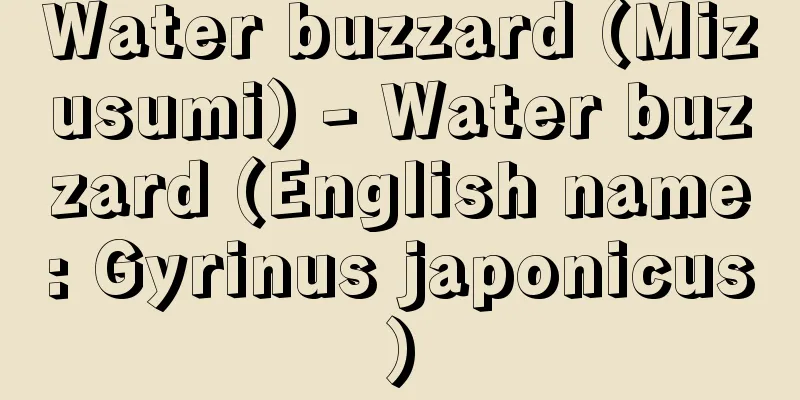New Year's Eve - Toshikoshi

|
The boundary between years. Also the night before the new year and the events held at that time. Due to changes in the calendar, the date of the boundary between years has moved to the last day of December, the night before Koshogatsu, or the night before Setsubun, or the beginning of spring. On this day, New Year decorations such as toshinawa, toshidana, and kagami mochi are set up, and preparations are made to welcome the New Year's god. People go to the shrine to stay in seclusion, or in their homes, they light a big fire in the hearth and stay up all night. At temples, bells are rung on New Year's Eve. New Year's was originally an opportunity to worship the spirits of ancestors, just like Bon, but since it came to be considered a happy festival, many places hold the soul festival at the end of the year. At shrines, a great purification ceremony is held. In the past, one day was from one sun setting to the next sun setting, so the night of New Year's Eve was already New Year's, so people sometimes sit down to a formal meal after dinner. This is the toshikoshi meal, and today people eat a fish with its head and tail still attached, which is just a token gesture. In addition, the custom of eating toshikoshi soba noodles, which was popular in Edo, has taken root and become commonplace. Note that the day on which a feast is eaten may also be called something-or-other-year-old's-year, for example, the day before the seven herbs festival being called the sixth day of toshikoshi. Source: Encyclopaedia Britannica Concise Encyclopedia About Encyclopaedia Britannica Concise Encyclopedia Information |
|
年の境。また新年前夜やそのときの行事。暦法の改変によって,12月末日,小正月の前夜,節分つまり立春の前夜などと,年の境の期日は移動している。この日は,年縄,年棚,鏡餅などの正月飾りをすませ,門松も立て終り,歳神を迎える準備を整えて鎮守に行って年籠りをするとか,家々ではいろりに大火を焚いて起き明かすなどの行事を行なった。寺では除夜の鐘を打つ。正月はもとは盆と並ぶ祖霊祭の機会であったが,めでたい祭りと考えるようになったため,暮れのうちに魂祭をすませるところが多い。神社では大祓 (おおはらえ) をする。昔は太陽が沈んでから次に沈むまでを1日としたので,年越しの夜はすでに正月に入っており,そのため夕飯がすんでからあらためて正式食事の膳につくことがある。これが年越膳で,今日では形ばかりの尾頭つきの魚を食べたりする。また,江戸で流行した年越そばを食べる習慣が根づいて一般化している。なお,単にごちそうを食べる日を何々年越しと呼ぶこともあり,七草の前日を六日年越しなどと呼ぶのはその一例である。
出典 ブリタニカ国際大百科事典 小項目事典ブリタニカ国際大百科事典 小項目事典について 情報 |
<<: City-state (English spelling)
Recommend
Motomezuka
Noh piece. The fourth piece. Four current pieces ...
Energy quantum
When the energy of a mechanical system is an inte...
One Heart, Five Worlds Jewel - One Heart, Five Worlds Jewel
...Although the name is the same, the Kabuki and ...
Bonifacio de Andrada e Silva, José
Born: June 13, 1763, Santos Died April 6, 1838, Ni...
Eight Laws of the Eiji Character
The character 永 (eight strokes) has been used sin...
Hosokawa Yoriharu - Hosokawa Yoriharu
A military commander during the Northern and Sout...
Sulfide minerals
A general term for a group of minerals that are co...
Matrone
…The change in the traditional image of midwives ...
Kaitenzan Tomb - Kaitenyama Tomb
This keyhole-shaped tumulus is located in Kurikuma...
size
… [Sizing for the paper industry] To make paper a...
Anfissa - Anfissa
…It was also a major player in the Second and Thi...
Lenticular plate
… [Image division method] Various methods have be...
Murav'ëv, Mikhail Nikolaevich
Born: April 19, 1845, Petersburg Died June 21, 190...
friendship
…The word yuai can mean friendship in the narrow ...
Transitional cell carcinoma
...therefore, they are further classified accordi...









